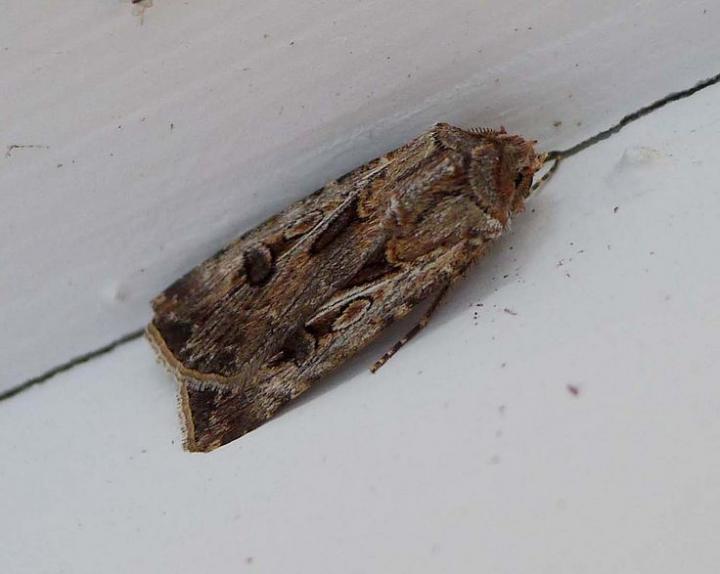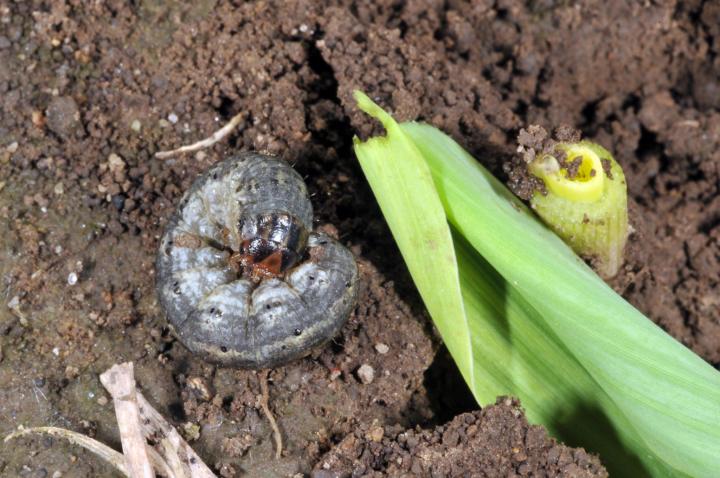
https://www.youtube.com/watch?v=MecU2keW54I


Oh no they have skewered my relatives! Oh the horror of it !
Cutworm
lol
That was pretty funny cutworm!
https://en.wikipedia.org/wiki/Cutworm
Cutworms are moth larvae that hide under litter or soil during the day, coming out in the dark to feed on plants. A larva typically attacks the first part of the plant it encounters, namely the stem, often of a seedling, and consequently cuts it down; hence the name cutworm. Cutworms are not worms, biologically speaking, but caterpillars.
https://entomology.ca.uky.edu/ent59
ENT-59: Cutworm Management in Corn | Download PDF
Cutworms are sporadic early-season pests that can reduce plant populations in a field. They often go unnoticed until after a significant number of plants have been damaged. Larger stages of cutworms cut entirely through the plant or tunnel into the plants below or above the soil line, whereas small-stage cutworms climb plants and chew small holes in the leaves.
While they are potentially very destructive, cutworms are unpredictable, and the chances of significant damage in any given year are relatively low. Corn can be seriously damaged by cutworms from planting through mid-June while the plants are less than 18 inches tall. Serious losses are often associated with wet springs that have caused a delay in planting.
Cutworms are the larvae of moths. These night-flying moths are frequently attracted to lights at night. The 1-1/2 to 2-inch moths are dull-gray to brown with yellow, gray, light brown, and black designs on the front wings. The hind wings are usually solid in color and lighter than the front wings. Moths lay eggs singly or in clusters on the leaves of grasses, weeds, other host plants, and sometimes on the bare ground.

Migration patterns of black cutworm moths from their southern overwintering sites.
This cutworm apparently does not overwinter well in the commonwealth except possibly in years with very mild winters. Spring infestations begin with the arrival of black cutworm moths from their overwintering sites in the Gulf states. Moths may be carried several hundred miles in just a few nights by strong southerly winds. In spite of this, it is the most common and damaging cutworm in Kentucky. Larvae sever the plants near the soil line, often with no other feeding damage present. Larvae move from plant to plant on successive nights, resulting in plant stand gaps.
This cutworm is most serious in weedy, late-planted fields with poor drainage, especially during cool, wet springs. Eggs are laid singly or a few together on leaves or stems of weeds, crop residues, or bordering fields before the corn is planted. The young larvae feed on these plants until corn seedlings emerge
Cutworms are opportunistic pests that can feed on many weed species as well as cultivated crops. Besides being pests of field crops such as corn, soybeans, and tobacco, they can damage a wide range of vegetable crops such as tomatoes, eggplants, peppers, cole crops, cucurbits, and onions. Damage to some crops may be greater due to higher per-plant value. Yield compensation may not be possible on some crops with above-ground growing points. Because infestations often begin on weeds, cultivation and other weed-control programs implemented before planting time may increase cutworm feeding on seedling crops. Cutworms can survive for some time between cultivation and planting, so allow at least two weeks between weed control and planting.
In some crops, cutworms can be extremely damaging where transplants are planted through plastic. It has been reported that the increased heat radiating out at night, particularly around the bases of the plants, attracts the larvae to the plants. Once underneath the plastic, the larvae are very difficult to control.

This is Mommy cutworm below:



BAD BABY CUTWORM! The penalty for you is death!
How to Identify and Get Rid of Cutworms (forum cutworms are good!) Thanks Mike
BAD BABY CUTWORM! The penalty for you is death! Yes I have Killed many!!!